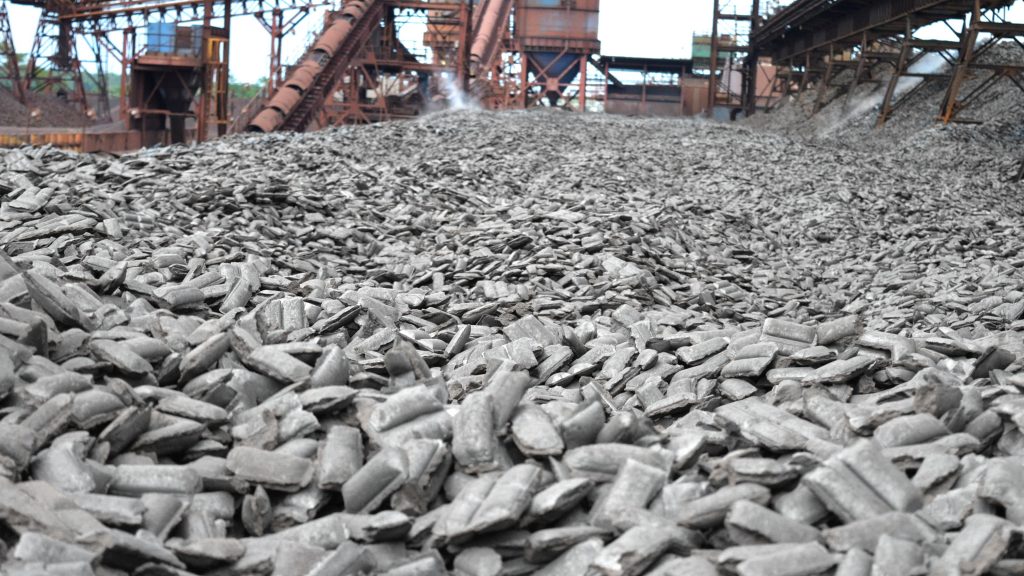Hot Briquetted Iron: trials in progress
Reducing carbon dioxide (CO2) emissions is one of the priorities of the steel industry in the world. One of the fastest decarbonisation option is to switch steel production from conventional converters to electric arc furnaces. This will involve the increase of scrap demand and the potential scarcity of such valuable raw material.
Železiarne Podbrezová (ZP) has since many decades adopted the virtuous steelmaking cycle based on scrap recycling through electric arc furnaces. And in order to be ready to face different future scenarios it has started the trials of an alternative to scrap and pig iron: Hot Briquetted Iron (HBI), the compacted form of Direct Reduced Iron (DRI).
DRI can obtained through specific technologies involving the reduction of iron ore by using natural gas or hydrogen. That results in a substantial saving in CO2 emissions if compared to pig iron production in blast furnaces.
“HBI briquettes have a chemical composition similar to pig iron. They have no tramp elements, especially copper and tin. The use of HBI thus reduces the content of undesirable elements in the steel” explained Ing. Stanislav Turňa, steelworks technologist. “The briquettes contain more than 80 % iron. They can partially replace the steel scrap.”
And how does the smelting work? “HBI material is added to the steel scrap, which is then smelted in an electric arc furnace. As the proportion of HBI increases, the melting time increases. This consumes more electricity, oxygen and other raw materials. The production characteristics of the EAF furnace with high HBI contents are different from the process using steel scrap due to the higher content of oxides and carbon. If a larger amount of HBI were fed into the furnace, this would require the creation of new melting programs, or the installation of new types of burners and modified additions such as lime or dolomite lime (dolomite).”
HBI as a ferrous scrap alternative
In February, we used HBI in the steelworks. So far, it is just a trial: “The HBI was tested in our steel mill in 2005. At that time, we were producing special steel for the automotive industry” mentioned Mr. Turňa, adding that HBI has been not in use since 2011. Now, after more than ten years, the steel plant has completed a new round of tests with HBI.
“We assume that there could be a shortage of scrap in the future. As mentioned, we must look for alternative solutions. Moreover, due to the emissions, many steelworks are also decommissioning blast furnaces, which will reduce the availability of pig iron. This raw material is part of the electric arc furnace charge. That is why our ironworks started trial production of steel with HBI” he added.

A complex process optimization
ZP has already completed the first smelting trials and the results are under evaluation. “We made 60 heats. We went systematically from smaller to higher quantities. Gradually, we discovered shortcomings, optimized the production process and looked for a way to make smelting more efficient. We also tracked the costs. To date, we have used almost 400 tons of HBI material for the tests” said S. Turňa.
HBI could be able to replace steel scrap in the future, however “we must realize that such smelting is not the cheapest solution and the complete replacement of scrap with HBI isn’t currently being considered” the technology leader replied.
The use of HBI also means a change for the employees themselves. “In addition to the standard smelting parameters, the employees have to monitor whether the HBI is molten or stickers on the walls or on the ground of the electric arc furnace are occurring. The whole process is a novelty. Most of us came in the contact with it for the first time” said the technologist, pointing at the colleagues who monitored the smelting process during the tests.
Our ironworks conducted the tests using five, seven and ten tons of HBI per batch. The technologists and the steel mill staff are evaluating the collected data, trying to obtain the optimal production process parameters.
The dynamics of steel industry in the years to come are uncertain, but ZP with this experimental campaign and the other ongoing research activities aims to be ready to face any circumstances, being at the forefront of technical development in order to remain efficient and competitive under every scenarios.
Article written by

Luca Orefici
Green ManagerFor more information, details or requests, don’t hesitate to contact us at marketing@pipex.it.
Don’t miss out on our news and initiatives, read our BLOG and subscribe to our Newsletter

 info@pipex-deutschland.de
info@pipex-deutschland.de
